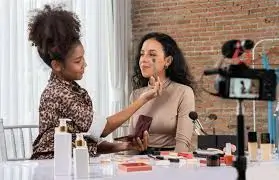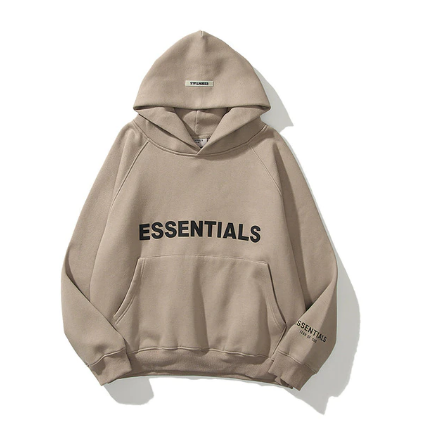In the past, beauty advertising relied on supermodels, glossy magazine pages, and big-budget TV commercials. Today, that reality has changed dramatically. With the explosion of digital platforms, influencers—especially those on Instagram, TikTok, and YouTube—have become the new faces of the beauty industry.
These content creators have built loyal audiences through authenticity, relatability, and real-time engagement. Their ability to showcase products in everyday settings has made them a more powerful marketing force than traditional celebrities. Brands now seek out influencers for their reach and, more importantly, their trust factor.
A 2023 Nielsen study found that 82% of consumers were more likely to buy a product recommended by a micro-influencer than one promoted through conventional ads. That shift in trust has fundamentally changed how beauty brands strategize their messaging, packaging, and distribution.
As we explore the relationship between influencers and beauty companies, it becomes clear that this isn’t a passing trend—it’s a structural transformation that’s reshaping the beauty business as we know it.
From Endorsements to Co-Creation
In the early days of influencer marketing, creators would simply promote a brand’s existing products in exchange for payment or free items. Today, that relationship has evolved into full-blown collaboration. Influencers are now co-creating products, launching limited editions, and even building brands from scratch with beauty giants.
This shift has added a layer of authenticity and innovation to beauty brands. Consumers no longer want generic promotions—they want to see their favorite influencer involved in the formulation, naming, and testing process. It gives products a “real person” stamp of approval.
Some of the most successful beauty launches in recent years, like Rihanna’s Fenty collabs or Huda Kattan’s empire, have been driven by influencer vision and credibility. These creators bring not just reach, but cultural relevance and consumer insight.
Their audience feedback loop is instant and active, allowing companies to refine their offerings in real time, reducing risk and increasing demand.
Micro-Influencers and Niche Engagement
While mega-influencers and celebrities still have value, beauty brands are increasingly turning to micro-influencers—those with 10k to 100k followers. Why? Because their engagement is typically more genuine, and their communities are often more loyal.
Micro-influencers thrive in niche spaces: natural skincare, K-beauty, cruelty-free makeup, and more. Their specialized knowledge and close-knit communities make them ideal partners for brands looking to build trust within specific segments of the market.
These influencers also tend to work with brands they genuinely love, avoiding over-commercialized partnerships. This leads to more authentic content and higher conversion rates.
For industries entirely unrelated to beauty, observing how influencers segment their messaging can also inspire digital strategies. A controle de fluidos company, for instance, could adopt similar micro-targeting to reach niche engineering audiences online.
The lesson is simple: scale isn’t everything. Intimacy, relevance, and trust now reign supreme in digital marketing.
Influencer-Driven Brand Startups
Not all influencers are content with brand deals—many are becoming entrepreneurs themselves. From skincare lines to wellness supplements, influencers are launching their own beauty brands with great success, leveraging their following to drive pre-sales and loyalty.
This DTC (direct-to-consumer) model gives influencers complete creative control, and because they understand what their audience wants, their products often resonate more than traditional launches. Examples include brands like Summer Fridays, created by bloggers, and Rare Beauty by Selena Gomez, which combines celebrity with mental health advocacy.
These startups are also redefining packaging, sustainability, and social purpose. Since influencers are highly attuned to audience values, their brands often reflect inclusive shade ranges, eco-friendly practices, or support for social causes.
In contrast to legacy companies, influencer-led businesses are agile and unafraid to experiment. They often start lean, scale quickly, and thrive on feedback loops—a model not unlike what an innovative fábrica de saco de lixo might use to test packaging solutions based on consumer feedback.
Influencers aren’t just reshaping beauty—they’re reshaping how products are built, sold, and refined.
Transparency and the Demand for Real Results
Audiences have grown increasingly skeptical of over-promising ads and Photoshop-heavy campaigns. Influencers, particularly those who show raw skin, real results, and detailed reviews, offer a refreshing dose of transparency. This honesty is reshaping the expectations that consumers have of beauty brands.
A product demo or a “first impressions” video carries more weight than a magazine ad. Consumers want to see how a product performs in real time—on real skin. They trust someone who tries a product for a month and gives a pros-and-cons list far more than they do airbrushed commercials.
This demand for transparency forces brands to level up: to offer clinically-backed data, to publish ingredient sources, and to invest in honest storytelling. Even the language in campaigns is changing—words like “real,” “authentic,” and “unsponsored” are now marketing gold.
As a result, integrity has become a competitive advantage. Just as industries like aços especiais must guarantee performance specs, beauty brands are now expected to back up every claim.
In today’s landscape, honesty doesn’t just build trust—it builds market share.
Social Commerce and Instant Conversion
The rise of influencer marketing has gone hand-in-hand with the growth of social commerce—shopping directly through Instagram, TikTok, or YouTube. This integration of content and commerce has made the beauty buying journey almost frictionless.
Influencers often include direct shopping links, discount codes, or affiliate integrations that make it easy for followers to act on impulse. One swipe, one tap, and a new lipstick or serum is on its way to the consumer’s door.
For beauty brands, this instant path to purchase changes everything. Marketing, engagement, and conversion now happen in the same space. Campaigns can be launched, tested, and adjusted in days, not months.
Even industries outside of beauty are studying this model. Social commerce strategies can inspire everything from clothing retail to service-oriented fields. If influencers can sell mascara in 30 seconds, why couldn’t a local bakery, artist, or cleaning service do the same?
In this ecosystem, content doesn’t just inform—it sells. And influencers are the ones holding the remote control.
Rethinking Influence: The Beauty Industry’s New Backbone
The evolution of influencer marketing has transformed beauty brands from top-down dictators of trends into collaborative, agile, and culturally responsive entities. In this dynamic new world, the voice of the consumer—channeled through influencers—is louder than ever before.
This isn’t just a change in advertising; it’s a change in structure. Influencers now inform product development, branding, community strategy, and long-term vision. They aren’t an accessory to the industry—they are central to its operation.
As the market continues to diversify, beauty companies that resist this model risk becoming irrelevant. The brands that succeed will be those that listen, adapt, and co-create with their audiences.
In the end, the most beautiful thing about this new era isn’t just the products—it’s the power shift behind them.


